Traditional Methods for the Modern Era
The restoration of Holmwood’s original designs is both a celebration of ‘Greek’ Thomson and traditional craftsmanship.
Alexander ‘Greek’ Thomson’s Holmwood House, located just outside the Glasgow city limits in the suburb of Cathart, was designed for paper magnate James Couperin and his wife in 1857–8. It is widely regarded as Thomson’s finest domestic creation. His stunning design legacy impresses at every turn. From its columns, cupolas and elegant floor-to-ceiling windows, to its walls and decorative friezes stenciled in bold and opulent colors, Holmwood is a shining example of Alexander Thomson’s iconic Greek revival style.
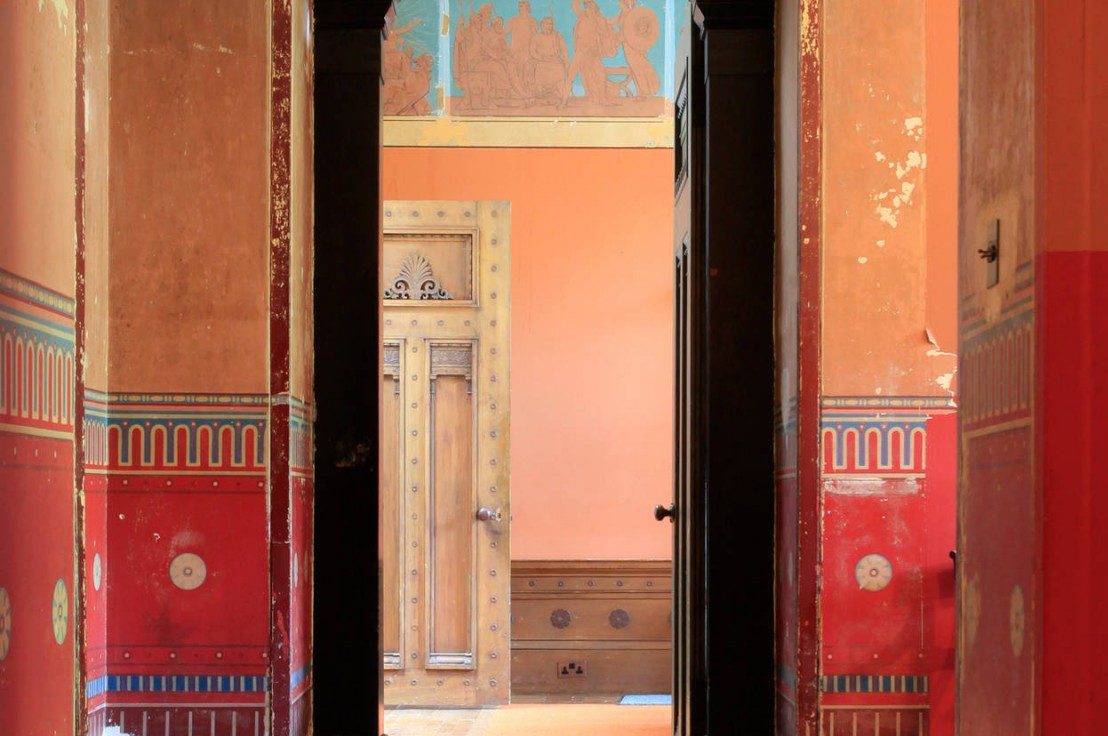
Interior, Holmwood House
The National Trust for Scotland enlisted traditional painters and decorators, Robert Howie & Son, to undertake the painstaking task to restore the rich and opulent designs of Thomson’s original decoration. Designs were revealed after being hidden for years under layers of paint applied by former owners. Holmwood’s restoration is both a celebration of Thomson’s design and traditional craftsmanship.
Our colleague in Scotland caught up with Ian Howie, who now heads up the team at Robert Howie & Son. Ian shares his unique perspective on restoring the beautiful designs and the challenges in bringing this home back to its previous splendor in his article below.
We are extremely grateful to NTSUSA donors Sandra and Holt Massey and Naoma Tate who generously supported the urgent conservation work at Holmwood, helping to return this special property to its former glory and bringing the architect and his work to the attention of a new generation.
Restoration of the Original Decoration of Holmwood House, Using Traditional Decorating Methods In A Modern Era
Written by Traditional Painter and Decorator Ian Howie
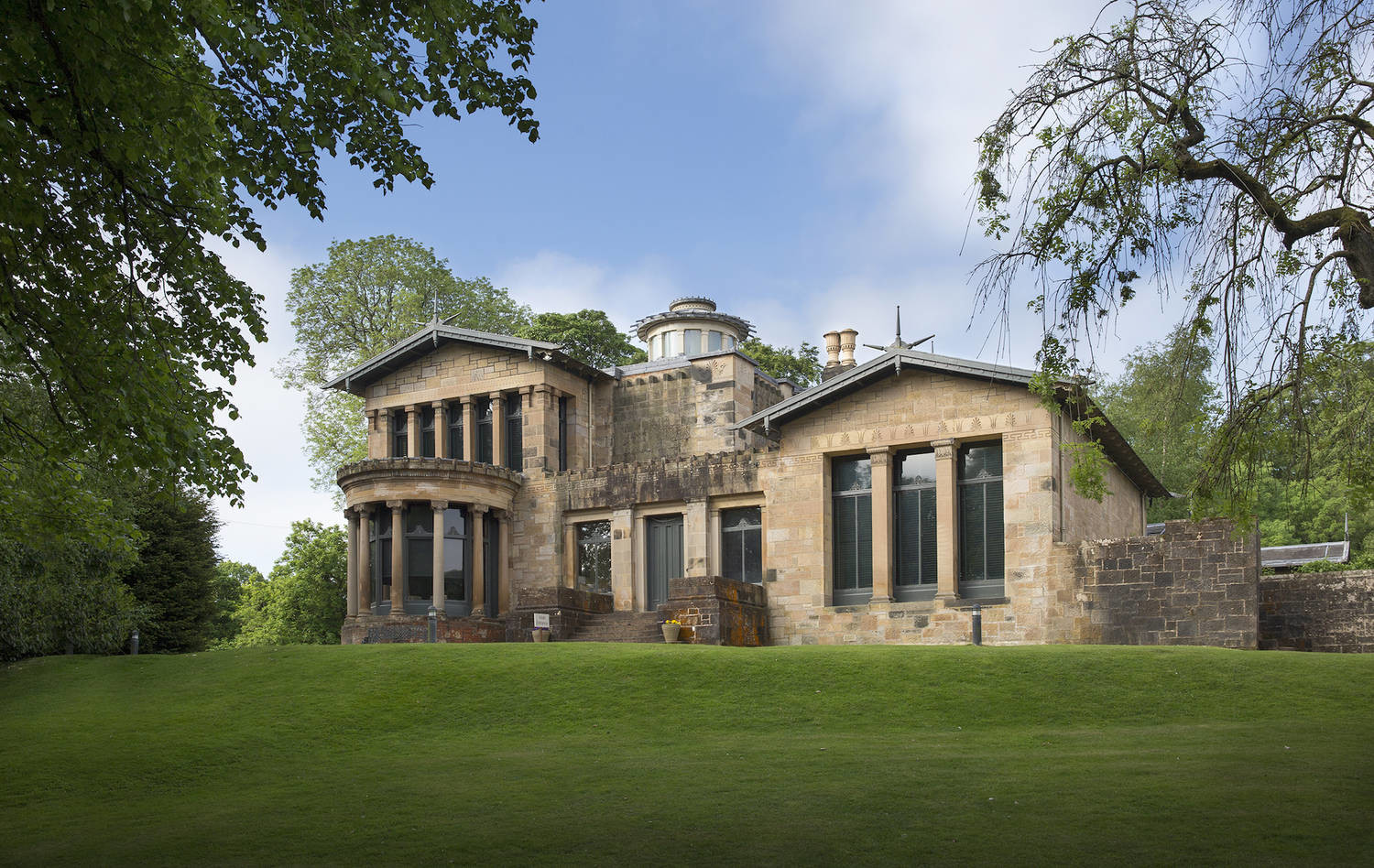
Holmwood House
When we were asked to be involved in the restoration of Holmwood I was genuinely excited. It was the last large-scale project myself and my father knew about before he died, when the Trust took possession in 1994.
To have known about the project for such a long time before commencing it, I was able to dedicate my imagination and creativity to it in advance. It was exciting and heartwarming to take my team into this project and see how they have embraced the challenges. I am proud of how it has changed them and the atmosphere of the house back into a family home.
The techniques and products used on this project are unusual, or even unique!
We aimed to lovingly restore this property and put our minds into piecing together the ideas and designs given Thomson’s mindset. We used traditional decorating methods that would have been used in the 19th century, learned from our research and experience of working on other historic properties.
Back then decorators were more technically challenged in their work, almost as if they were chemists.
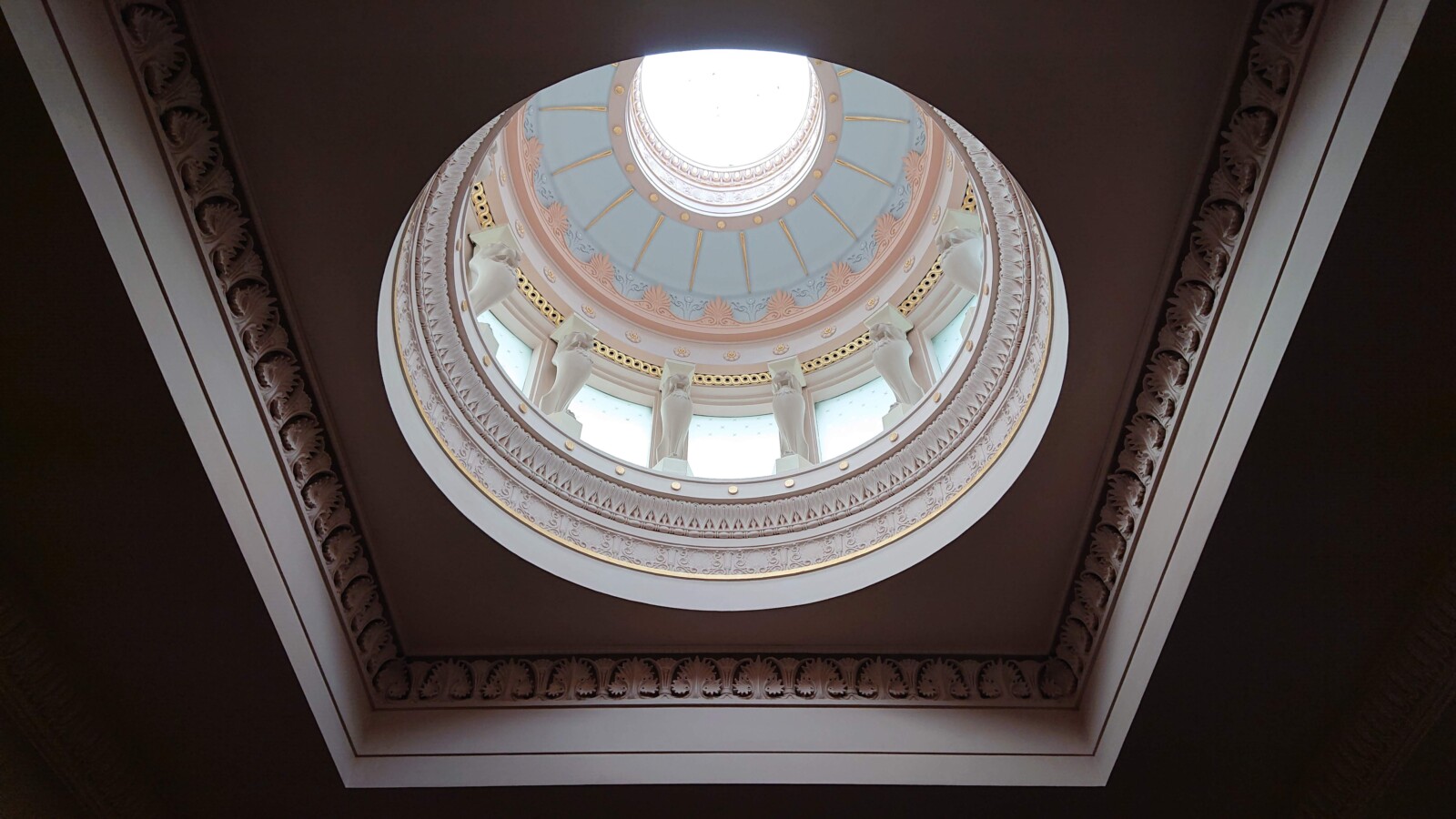
Cupola, Holmwood House
In the 19th century lime was mixed in metal containers, pigments came in powder, and the composition of paint was quite different. Prime colors were used to match up colors to a desired bespoke hue. Designs were created by marking out, drawing and cutting stencils of varnished card before applying the designs. These were then painted with glazes that altered the translucency. The plaster decoration was finally gilded with gold leaf using oil gold size to adhere the leaf to the surfaces. The gold that was applied in the cupola, was oil gilded, 23.6 carat gold.
It was a challenge to adapt modern decorating methods to the requirements of this project. In order to meet conservation requirements, all the paints had to be oil based, so they are reversible. Artist oil colors were used to control hue and depth of translucency in pigmented washes carried out as per the research data.
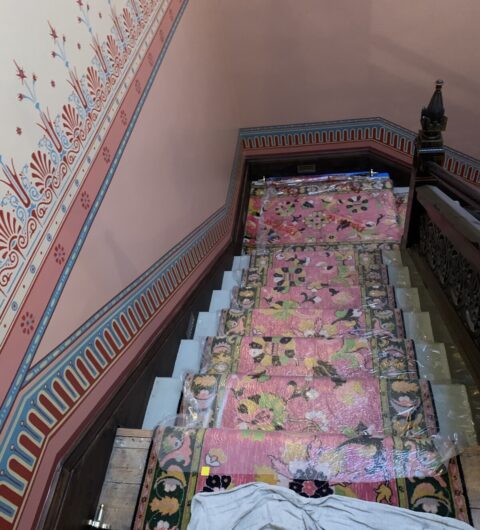
The paint was tinted on site, to replicate the old techniques, which then in turn was varnished with oil-based matte varnish to replicate the same type of treatment that would have been originally carried out.
Generally we have chosen these products after trials were carried out to assess drying times and finish.
There are exposed areas in the house for the public to view elements of the original colors and designs, called ‘conservation windows’. Specialist conservators have carefully cleaned for research, and reference to show the public how everything ties in.
Restoring a building of this nature is never going to be straight forward. Most of the challenges came from expanding the designs from the sample areas left by conservators, as some of these were only inches wide.
The whole project is the most complex in detail and in scale in my 35 years of association with the Trust. I honestly can’t remember a more complicated project in my father’s lifetime either; his association with the Trust goes back to 1969 at Culzean Castle.
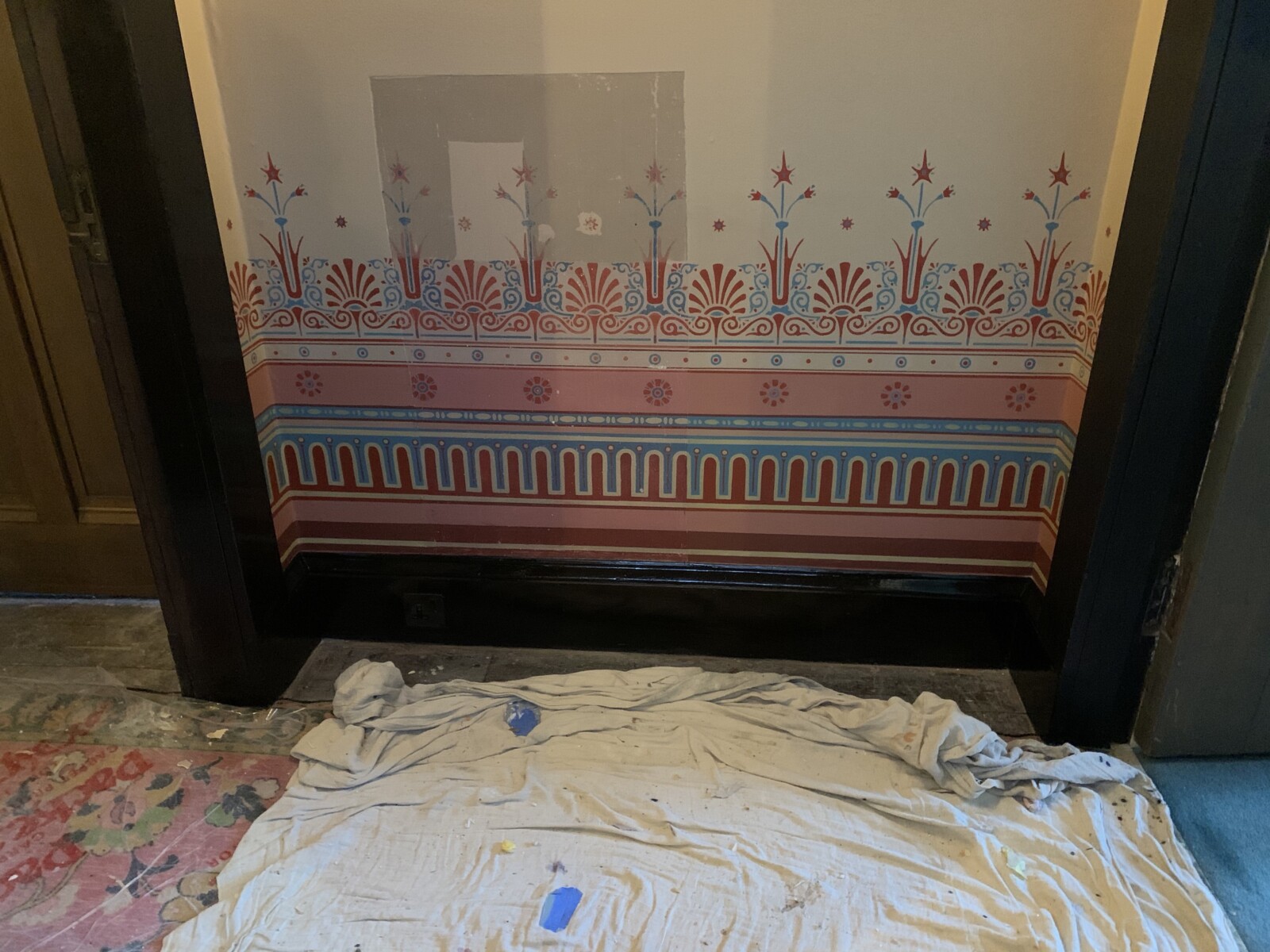
Robert Howie & Son, traditional painters & decorators was established in 1954 by three brothers: Robert Howie, Andrew Howie, and William Howie. Current staff consist of Ian Howie (Manager) who has 35 years of experience and is of the second generation, son Calvin Howie (Foreman) third generation, and John Patterson and Brian Shields. The company has a relatively young team, with the two youngest members being 26 years old. We are proud to be investing in putting traditional skills back into a younger generation.
How You Can Help
The impact of the public health crisis has been devastating for the Trust. Properties have been closed indefinitely to ensure the safety of visitors, volunteers, and staff. And yet the Trust’s work continues: property teams have been working hard during lockdown to make sure that some of Scotland’s most precious places and spaces, like Holmwood House, are cared for and protected. Americans can support this important work by making a tax-deductible donation to NTSUSA today!

